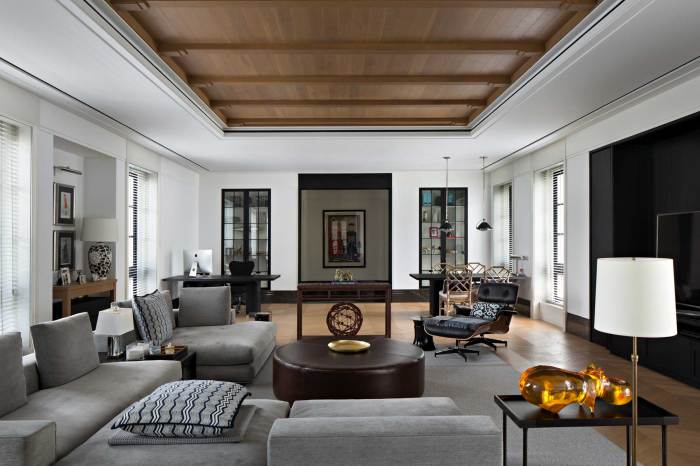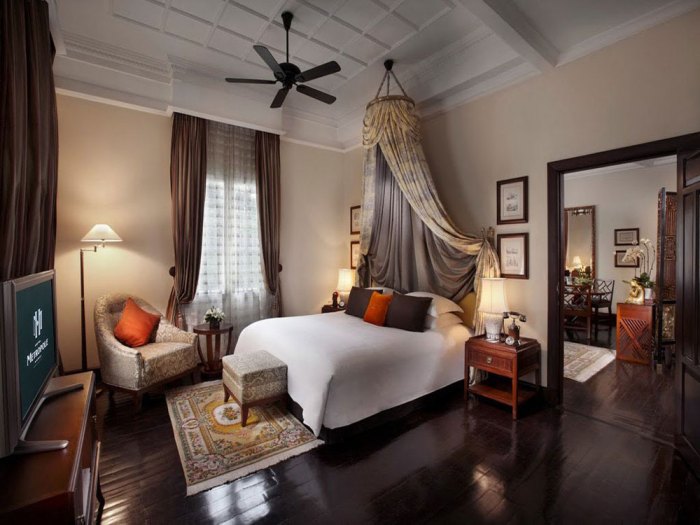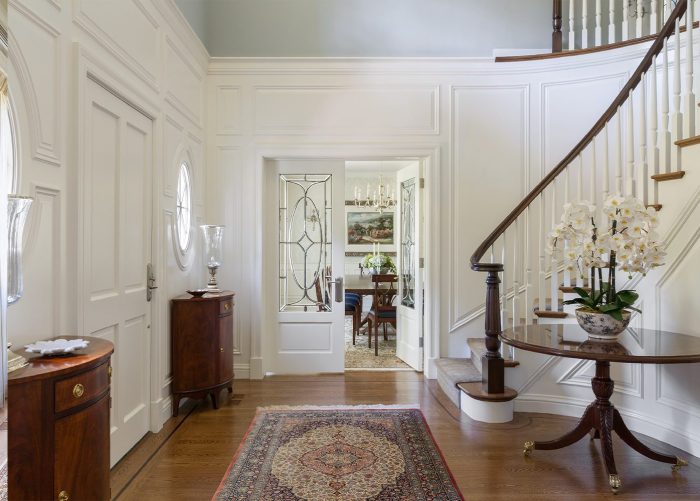Exploring Colonial Interior Design: A Timeless Blend of History and Elegance

Delving into colonial interior design, this introduction immerses readers in a unique and compelling narrative. From its historical influences to iconic furniture pieces, colonial interior design offers a rich tapestry of elements that define its timeless appeal.
As we journey through the color palettes, materials, furniture styles, and decorative elements of colonial interior design, we uncover the essence of this classic aesthetic and its relevance in modern interiors.
Definition of Colonial Interior Design
Colonial interior design is a style that reflects the decor and furnishings of the colonial era, particularly from the 17th to the 19th centuries. It combines elements from various countries that were once colonial powers, such as England, France, Spain, and Portugal, to create a unique aesthetic that is both elegant and timeless.
Characteristics of Colonial Interior Design
Colonial interior design is characterized by:
- Rich, dark wood furniture with intricate carvings and detailing
- Neutral color palettes with accents of deep, jewel tones
- Symmetrical arrangement of furniture and decor
- Use of natural materials such as wood, leather, and stone
- Incorporation of decorative elements like brass hardware, floral patterns, and porcelain
Historical Influences on Colonial Interior Design
Colonial interior design draws inspiration from the colonial architecture and design styles of countries such as:
- English Colonial: Influenced by the English countryside, featuring cozy, rustic elements
- French Colonial: Reflects the elegance and sophistication of French design, with ornate detailing
- Spanish Colonial: Showcases the use of wrought iron, terracotta tiles, and vibrant colors
- Portuguese Colonial: Known for its intricate tile work, arched doorways, and decorative woodwork
Key Elements in Colonial Interior Design
Key elements in colonial interior design include:
- Canopy beds with elaborate drapery
- Wingback chairs and camelback sofas
- Chandeliers and sconces with candle-style bulbs
- Antique rugs and tapestries
- Fireplaces with intricate mantels
Color Palette and Materials

When it comes to colonial interior design, the color palette typically consists of warm and earthy tones that reflect the natural surroundings of the colonial era. These colors create a cozy and inviting atmosphere that is characteristic of colonial homes.Common materials used in colonial interior design include wood, brick, and stone.
These materials were readily available during the colonial period and were used extensively in construction. They add a sense of authenticity and historical charm to colonial interiors.
Wood
Wood is one of the most prominent materials used in colonial interior design. It is often used for flooring, furniture, and architectural details such as beams and paneling. The warm tones and natural grain of wood add warmth and texture to colonial interiors.
Brick
Brick was commonly used for fireplaces, accent walls, and exterior facades in colonial homes. Its rustic look and durability make it a popular choice in colonial interior design. Exposed brick walls can add a sense of history and character to a space.
Stone
Stone was also a popular building material during the colonial era. It was used for foundations, chimneys, and accent walls. The use of stone in colonial interior design adds a sense of solidity and permanence to the space. Whether it's rough-hewn or polished, stone brings a touch of natural beauty to colonial interiors.
Furniture and Layout
When it comes to colonial interior design, furniture and layout play a crucial role in capturing the essence of the era. The furniture styles, layout principles, and iconic pieces all contribute to creating a timeless colonial-inspired space.
Furniture Styles in Colonial Interior Design
In colonial interior design, furniture styles are often characterized by sturdy craftsmanship, simple lines, and rich wood tones. Some common furniture pieces include:
- Four-poster beds with intricate carvings
- Chippendale chairs with claw-and-ball feet
- Queen Anne tables with cabriole legs
- Secretary desks with drop-down writing surfaces
Layout Principles in Colonial Interior Design
The layout principles in colonial interior design focus on symmetry, balance, and functionality. Rooms are often arranged in a formal and orderly manner, with furniture placed to create a sense of harmony and cohesion. Key layout principles include:
- Creating conversation areas with seating arrangements
- Emphasizing focal points such as fireplaces or large windows
- Using area rugs to define different spaces within a room
Iconic Furniture Pieces in Colonial Interiors
Iconic furniture pieces that are synonymous with colonial interiors include:
- Wingback chairs with high backs and winged sides
- Tavern tables with turned legs and rustic finishes
- Canopy beds with elaborate drapery
- Sheraton sofas with delicate inlay work
Decorative Elements
When it comes to colonial interior design, decorative elements play a crucial role in enhancing the overall aesthetic. Textiles, lighting, and accessories are key components that add warmth and charm to colonial spaces. Let's delve into the details of these decorative elements.
Textiles
Textiles such as curtains, rugs, and upholstery are vital in colonial interior design. Opt for rich, heavy fabrics like velvet, silk, or wool to evoke a sense of luxury and elegance. Look for traditional patterns like florals, stripes, or damasks to stay true to the colonial style.
Lighting
In colonial interior design, lighting is used to create a warm and inviting atmosphere. Chandeliers, wall sconces, and table lamps with intricate metalwork or glass detailing are popular choices. Soft, warm light can help highlight the traditional elements of colonial decor.
Accessories
Accessories such as mirrors, artwork, and decorative objects are essential for adding character to colonial interiors. Opt for ornate frames, vintage paintings, and antique figurines to enhance the colonial look. Incorporating brass, copper, or wrought iron accents can further elevate the space.
Symmetry and Balance
Symmetry and balance are fundamental principles in colonial interior design. Symmetrical arrangements of furniture, artwork, and decorative elements create a sense of harmony and order. Balancing heavy furniture pieces with delicate accessories helps maintain a cohesive look throughout the space.
Incorporating Colonial Decorative Elements into Modern Interiors

To incorporate colonial decorative elements into modern interiors, focus on blending traditional and contemporary pieces seamlessly. Mix vintage textiles with sleek furniture, or pair antique lighting fixtures with minimalist decor. By carefully selecting and layering decorative elements, you can create a unique fusion of colonial charm and modern sophistication.
Ending Remarks

In conclusion, colonial interior design is not just a style; it's a reflection of a bygone era infused with sophistication and charm. By blending historical elements with modern sensibilities, one can create a space that exudes elegance and timelessness. Embrace the allure of colonial interior design and let your home tell a story of tradition and beauty.
Helpful Answers
What are the key characteristics of colonial interior design?
Colonial interior design is characterized by symmetrical layouts, use of natural materials like wood and stone, and traditional color palettes.
How can colonial decorative elements be incorporated into modern interiors?
To incorporate colonial decorative elements into modern interiors, focus on using classic furniture pieces, traditional textiles, and incorporating symmetry and balance in the design.
What role does symmetry and balance play in colonial interior design?
Symmetry and balance are crucial in colonial interior design as they create a sense of harmony and elegance in the space.

